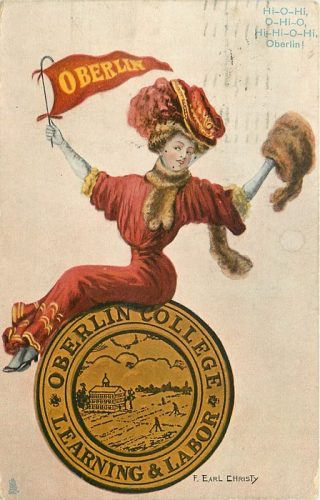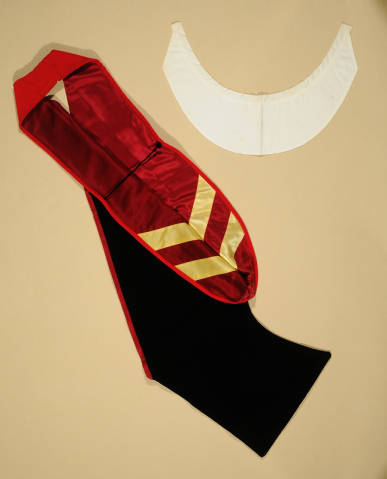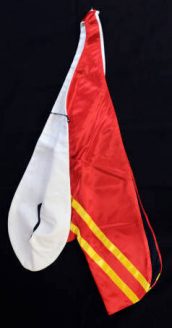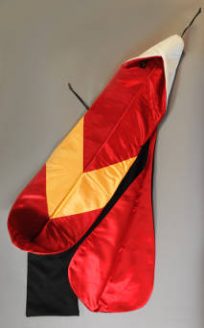Oberlin College
Ohio
1833




The Oberlin College faculty selected cardinal red and Mikado yellow as the college’s school colors in 1889 because these colors are found in the coats of arms of John Frederick Oberlin and his brother. The 1934 Webster Dictionary described Mikado Yellow as an orange-yellow or golden yellow hue, but the most common unofficial descriptions of Oberlin’s colors in the late 1800s and early 1900s were “red and gold”, “cardinal and gold” or “crimson and gold”.
Citations in the World Almanac (listed by cover date; color information is from the previous year): crimson/gold (1895-1935)


Oberlin students began wearing mortarboard caps in 1881, with different colored tassels indicating whether the wearer was a freshman, sophomore, junior, or senior. Against the wishes of the faculty, Oberlin seniors first wore caps and gowns at the 1896 commencement, a year after the Intercollegiate Code of Academic Costume was written. By 1903 this custom was firmly established, but hoods were not worn at this early point.
Gardner Cotrell Leonard was the Director of the Intercollegiate Bureau of Academic Costume (IBAC) and also a partner at Cotrell & Leonard, one of the major manufacturing firms for academic dress in the United States. Because the relationship between the IBAC and Cotrell & Leonard was tight (contemporary materials described Cotrell & Leonard as the “depository” for the IBAC), it is likely that a school was assigned an academic hood lining pattern by the IBAC when that school made a purchase order for academic costume from Cotrell & Leonard. If this is correct, Cotrell & Leonard advertisements from the turn of the century can provide one with a rough estimation of the date when the hood lining pattern of a particular college or university was first registered by the IBAC.
Oberlin College was first referenced (without a description of its hood) in a Cotrell & Leonard advertisement in the April 1905 edition of the Oberlin Alumni Magazine, which suggests a 1904 or 1905 registry by the Intercollegiate Bureau. Oberlin faculty first wore academic costume in 1907. The Intercollegiate Code permitted faculty to wear either a hood representing the institution where they had earned their degree, or a hood representing the institution where they worked. So an Oberlin hood must have been designed no later than 1907.
According to the Oberlin archives, the faculty initially approved a yellow background and red chevron, but in 1908 (for the school’s 75th anniversary) the design was changed to a crimson background with gold chevron. The first full Intercollegiate Bureau of Academic Costume description of the college’s hood lining can be found in 1918, where it was described as red with a gold yellow chevron.
This was too similar to the hood already assigned to the University of Denver (cardinal with a gold chevron), so by the mid-1920s the IBAC had reassigned Oberlin a new hood lining design: cardinal with two gold orange chevrons. The chevrons were about 1½ inches in width, placed approximately two inches apart with the cardinal color of the lining showing between them.
The IBAC had difficulty describing Oberlin’s Mikado yellow: in 1918 the Bureau said the single chevron was “gold yellow”, by 1927 the two chevrons were “gold orange”, by 1948 they were “gold”, in 1969 they were “yellow”, and then by 1972 they were “gold” again.
Regardless of how the shade of Mikado yellow was described, the two chevrons assigned to Oberlin between 1918 and 1927 remained in all subsequent Intercollegiate Bureau of Academic Costume lists.
For more information on this subject, see “Academic Regalia at Oberlin: the Establishment and Dissolution of a Tradition” by S.E. Plank in the Northeast Ohio Journal of History Volume 1, Issue 2 (April 2003).



